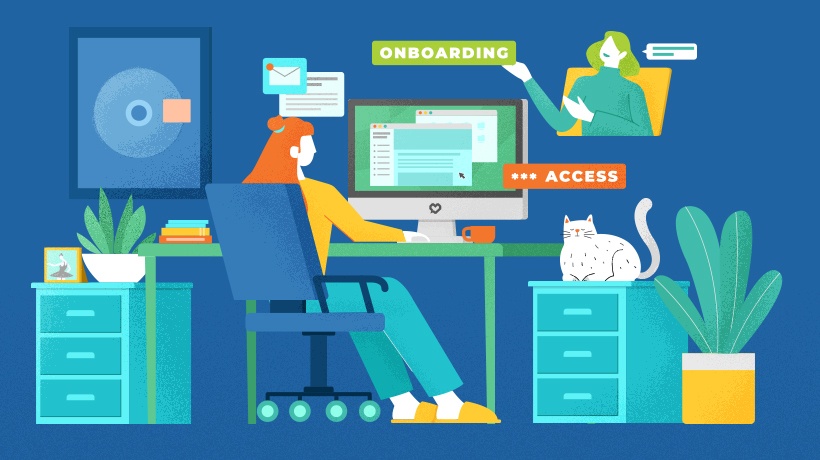
Steps To Simple LMS Migration
Steps to Easy LMS Migration
The time has finally come: after years of debate, you are looking for a new LMS.
Maybe you have outgrown your LMS. It worked when you found it, but now your business has grown and your platform has not scaled with you. The reporting may not be robust enough or may not exist at all. You could have many solutions, but they are spread across different platforms and you want to bring it all together. You may have seen features that are offered elsewhere and that your current solution does not. If you want to make optimal use of the current standards, you need up-to-date software.
Whatever the reason, your LMS is not meeting the needs of your company. You need a better solution – and you found one! A shiny new LMS that will meet all of your current and future needs! You are ready to pack and move on …
But are you really ready for the LMS migration?
Strong change management plan
Unfortunately, you cannot initiate an LMS migration by simply flipping a switch. Ok, maybe you can, but there are plenty of other people who should be aware of the LMS migration process before it takes place. Before you begin onboarding a new LMS, you need a change management plan. Think of this as a to-do list that includes:
- Reasons why you are making the change;
- What will the lasting effect be;
- When will it start; and,
- How long it will take.
The plan also identifies key responsibilities such as the project manager and migration team who fill these roles, when milestones are met, and how those tasks are successful.
Make sure you also understand the benefits of moving to a new LMS. Business is done with dollars and meaning. You cannot switch to a new LMS “just because”. You need to show your stakeholders that the results are worthwhile.
Assign a dedicated team to manage the LMS migration project plan
With your stakeholders on board, it’s time to assemble your team. For an LMS migration to be successful, you need:
- Project manager
A confident and credible leader tasked with taking the necessary steps from the kickoff meeting to final implementation. Supported by a competent change management team, they address the concerns of the other parties. - HRIS
The Human Resources Information Systems (HRIS) team manages your company’s HR data and keeps employee records up to date. It also integrates with your LMS to automate user creation and communicate learning record data. - IT
The IT department provides the necessary infrastructure to keep the LMS running and provides security measures for communication between systems without compromising the security of the company. You will work closely with the HRIS team to ensure that the systems are communicating appropriately. - Interest Groups
Your stakeholders support the decision to switch to a new LMS. You should be kept informed during the LMS migration. - LMS SME
Your technical expert (SME). Your contact for answers to the LMS. A vendor may initially be your SMB, but your LMS vendor is unaware of your company culture or learning initiatives. The LMS administrator helps organize the platform and teaches others how to use it.
Identify any integrations with other systems
Your IT and HR departments know the integrations that need to take place. It is important to understand how the LMS communicates with your company’s infrastructure.
- Do you use single sign-on as part of your company’s security measures? Will you integrate the LMS into your SSO infrastructure or will your employees log in to a separate account? Which APIs connect all of your data together? An LMS and an HR system do not speak to each other natively (unless they come from the same provider). Therefore, APIs transfer data back and forth as employee records and courses are updated.
- Are you using a webinar tool? Can your LMS integrate into this?
- What about e-commerce? In addition to integrating your business, you should also connect your LRS (Learning Record Store) to track analytics so you know how your customers are finding you, when they are visiting, and what they are buying.
- Think about what you want to access in your current LMS and what you want to connect to. What is shown in the associated data records? What is important to know
Complete list of courses and programs that must be included in the LMS migration
Beyond systems, you need to inventory the information stored in your old LMS: assignment profiles, course recordings, course content, automated notifications, historical data and all content that has been archived for corporate or legal reasons. Anything retained by your LMS should be considered in order to then decide whether or not to add it to the LMS migration process.
You can deliver anything, but keep in mind that the more you bring, the longer the transfer will take. In addition, you should prioritize content for your LMS migration team. Historical data and related records usually come first, but what’s next? How many departments are fighting for notoriety? Are you currently using courses that may have priority?
Another important consideration is hierarchy. How are your courses organized? Is this organizational system included in the LMS migration project plan?
Take the time to test
When everything is in place it will seem like you are ready, but crucial steps remain. Integrating a new LMS takes a lot of time to test. It also requires a team ready to tackle the system in a logical order. Your LMS migration team can work with HRIS and IT, but should also communicate with other departments to ensure that external integrations are working properly. Each department should test their courses for functionality.
Look again at the list of requirements with which you selected this LMS. Do you know how they work in the system? Now is the time to try them out!
Have a pilot group use the system in parallel with the other system
Once you are comfortable with your beta results, take control of the system with your first students, teachers and administrators. Perform this test with your previous LMS so testers can compare and contrast for themselves. Allow them to compare how courses work in different settings without relying on memory. It is important to test everyday functions: access to courses, student records, reporting, etc. If any of these functions do not work as intended or if you have questions, you can answer them before the system is up and running.
Training for all users of the new system (learners and LMS administrators)
Take the time to create training for your staff and administrators as you build the system. Your learners should focus on learning, not the new platform. Make it as hassle-free as possible with help files, videos, and support. This includes making sure your LMS administrators are confident about integrating a new LMS and conveniently answering questions from learners with difficulties. A collaboration tool that your administrators can use to modify the help file creates a solid resource for integrating your staff into your new LMS.
Kineo
Kineo helps the world’s leading companies improve performance through learning and technology. We combine quality of learning with award-winning customer service and innovation. We’re here to meet your learning and performance challenges – and deliver results.



